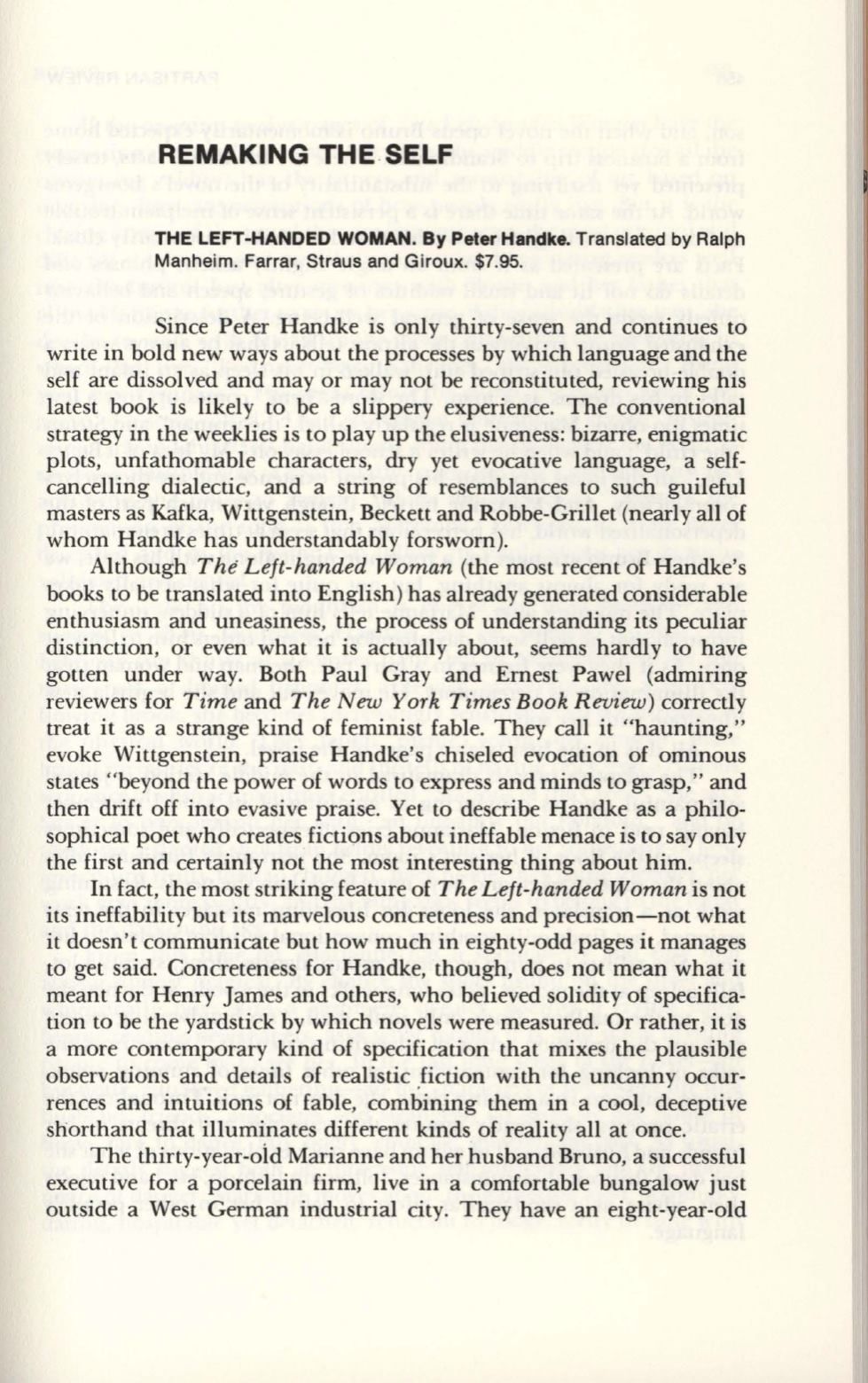
REMAKING THE SELF
THE LEFT-HANDED WOMAN.
By
Peter Handke.
Translated by Ralph
Manheim. Farrar, Straus and Giroux. $7.95.
Since Peter Handke is only thirty-seven and continues to
write in bold new ways about the processes by which language and the
self are dissolved and mayor may not be reconstituted, reviewing his
latest book is likely to be a slippery experience. The conventional
strategy in the weeklies is to play up the elusiveness: bizarre, enigmatic
plots, unfathomable characters, dry yet evocative language, a self–
cancelling dialectic, and a string of resemblances to such guileful
masters as Kafka, Wittgenstein, Beckett and Robbe-Grillet (nearly all of
whom Handke has understandably forsworn).
Although
The Left-handed Woman
(the most recent of Handke's
books to be translated into English) has already generated considerable
enthusiasm and uneasiness, the process of understanding its peculiar
distinction, or even what it is actually about, seems hardly to have
gotten under way. Both Paul Gray and Ernest Pawel (admiring
reviewers for
Time
and
The New York Times Book Review)
correctly
treat it as a strange kind of feminist fable. They call it "haunting,"
evoke Wittgenstein, praise Handke's chiseled evocation of ominous
states "beyond the power of words to express and minds
to
grasp," and
then drift off into evasive praise. Yet to describe Handke as a philo–
sophical poet who creates fictions about ineffable menace is to say only
the first and certainly not the most interesting thing about him.
In fact, the most striking feature of
The Left-handed Woman
is not
its ineffability but its marvelous concreteness and precision-not what
it doesn' t communicate but how much in eighty-odd pages it manages
to get said. Concreteness for Handke, though, does not mean what it
meant for Henry James and others, who believed solidity of specifica–
tion
to
be the yardstick by which novels were measured. Or rather, it is
a more contemporary kind of specification that mixes the plausible
observations and details of realistic .fiction with the uncanny occur–
rences and intuitions of fable, combining them in a cool, deceptive
shorthand that illuminates different kinds of reality all at once.
The thirty-year-oid Marianne and her husband Bruno, a successful
executive for a porcelain firm, live in a comfortable bungalow just
outside a West German industrial city. They have an eight-year-old


